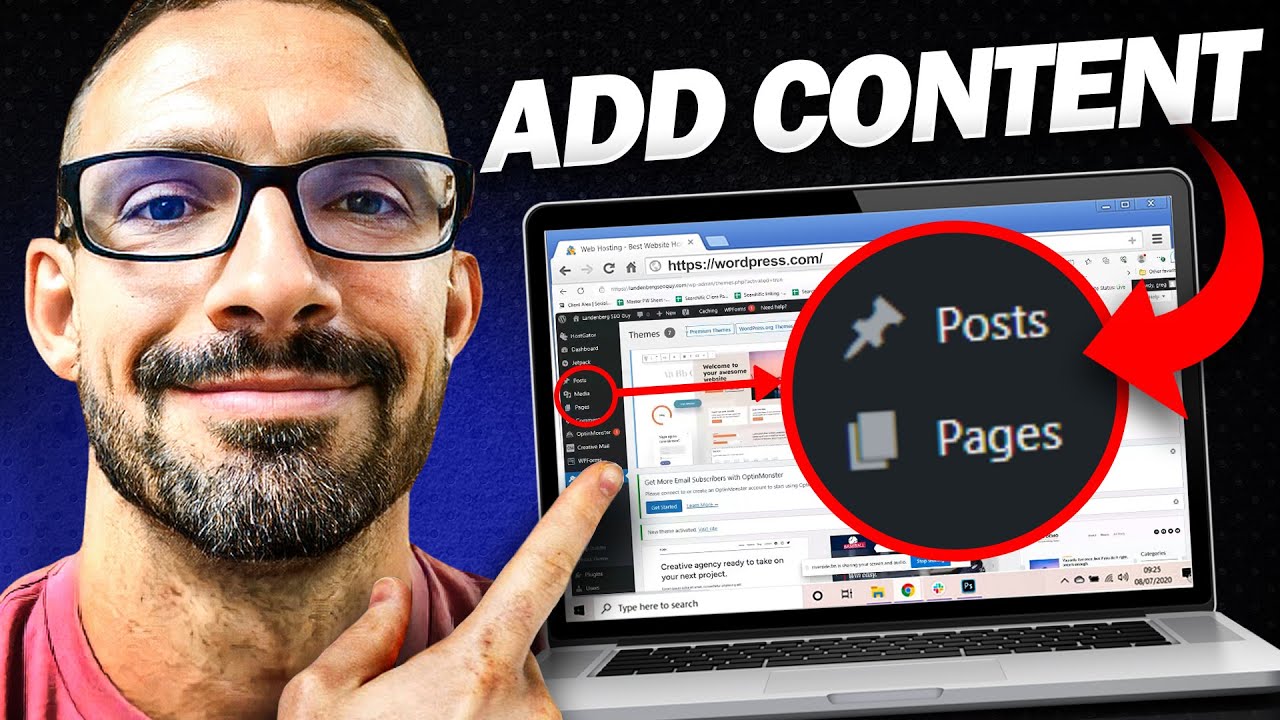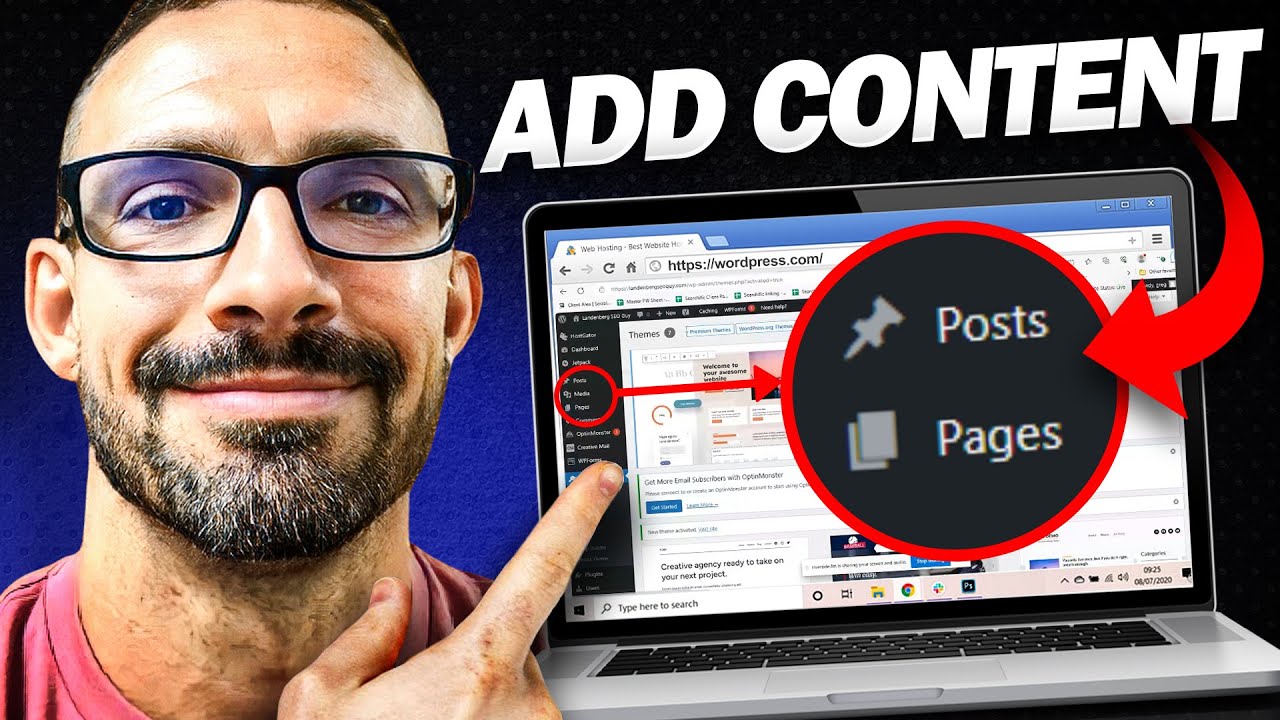In the video tutorial on the difference between posts and pages in WordPress, you will learn how to effectively add content to your website and customize your homepage display. This tutorial is perfect for beginners in WordPress who want to improve their skills. Throughout the video, you will discover that posts are primarily used for blog posts, while pages are used for other types of content. The way posts and pages are displayed on your website depends on the theme you are using. There is also an option to install a plugin called Classic Editor to change the post editor style. You will learn how to create and edit posts and pages in the dashboard, adjust the number of blog posts shown on the homepage, and even set pages as your homepage. Different themes have different appearances and ways of displaying posts and pages, so this tutorial will help you navigate through these options. Watch the full video tutorial and level up your WordPress skills today!
Difference between posts and pages
Overview
When it comes to adding content to your WordPress website, you have two main sections to work with: posts and pages. While both sections serve a similar purpose, there are some key differences to keep in mind. In this article, we will explore the distinction between posts and pages, how they are displayed on your website, and how to create and edit them.
Posts
Posts are typically used for blog posts on your website. They are meant to be timely and frequently updated, and are displayed on the homepage or on a designated blog page. When you create a new post, it is added to the list of blog posts and can be organized by categories and tags. This helps users easily find related content on your site.
To maximize the visibility of your blog posts, it is important to consider the number of blog posts shown on your homepage. In the settings, you can adjust the number of blog posts displayed, ranging from one to all of your posts. This allows you to control how much content is shown on the homepage at a time.
Another aspect to consider is whether you want to display the full post or just an excerpt on the homepage. By default, WordPress displays excerpts of your blog posts on the homepage, which gives readers a glimpse of the content and encourages them to click and read more. However, you can also choose to display the full post if you prefer.
Pages
On the other hand, pages in WordPress are used for other types of content that are not part of your regular blog posts. Pages are meant to be more static and timeless, such as an about page, contact page, or a services page. They are not displayed in the list of blog posts, but can be added to the website menu or sidebar for easy navigation.
Creating and editing pages in WordPress is similar to creating and editing posts. You can add text, images, videos, and other types of content to your pages. However, pages do not have categories or tags like posts do, as they are not meant to be organized and updated on a regular basis.
You also have the option to set a page as the homepage of your website instead of displaying your blog posts. This is useful if you have a static homepage that showcases your company or brand, while still providing access to other pages through the menu or sidebar.
When it comes to the appearance of posts and pages, it is important to note that it can vary depending on the theme you are using. Some themes are designed to display blog posts on the homepage, while others have a static homepage where the blog posts are displayed on a separate page. The appearance and layout of your posts and pages can be customized to match the overall design of your website.
Display on the website
The way posts and pages are displayed on your website depends on the theme you are using. For themes that display blog posts on the homepage, your latest blog posts will be showcased front and center. This creates a dynamic and frequently updating homepage that is perfect for blogs or news websites.
On the other hand, some themes have a static homepage where your blog posts are not displayed. In this case, your homepage will have a more static and informational layout, showcasing your chosen content and providing easy access to other pages.
If you prefer the static homepage style but still want to showcase your blog posts, you can create a separate blog page where all of your blog posts are displayed. This allows you to have the best of both worlds – a static homepage and a dedicated blog section.
Customizing the display of your homepage, posts, and pages is an important aspect of creating a cohesive and visually appealing website. Themes often have built-in customization options that allow you to change colors, fonts, layouts, and more. By experimenting with different settings, you can find the perfect look for your website.
Editing and creation
Managing your posts and pages is done through the WordPress dashboard. From here, you can create new posts and pages, edit existing ones, and organize them into categories or tags. The dashboard provides an intuitive interface for managing your content and makes it easy to keep your website updated.
Creating a new post is similar to writing a document in a word processor. You can add text, images, videos, and other media to your post, and format it using the built-in editor. The classic editor plugin can be installed if you prefer the older style of editing posts, and it offers a simplified and familiar interface for content creation.
Similarly, creating a new page follows the same process as creating a post. You can add content, images, videos, and format your page to suit your needs. Pages are often used to provide information about your business, showcase your products or services, or create dedicated landing pages for specific campaigns.
Settings
WordPress allows you to customize various settings related to the display and functionality of your posts and pages. In the settings menu, you can adjust the number of blog posts shown on your homepage, choose whether to display the full post or an excerpt, and set a page as the homepage of your website.
By adjusting the number of blog posts shown on your homepage, you can control the amount of content that is displayed to your visitors. This is especially important if you have a large number of blog posts, as showing all of them at once can overwhelm the homepage.
Setting a page as the homepage is useful if you have a static front page that showcases your brand or business, while still providing easy access to other pages through the menu or sidebar. This allows you to create a unique and personalized homepage that reflects your business values and goals.
Additionally, different themes offer various customization options for your posts and pages. You can choose different post display styles, fonts, colors, layouts, and more to create a website that matches your brand identity and design preferences.

Conclusion
Understanding the difference between posts and pages in WordPress is essential for creating and managing your website’s content effectively. By utilizing posts for blog posts and pages for static content, you can organize your website in a way that is clear and user-friendly.
Furthermore, selecting the right theme for your website is crucial, as it determines how your posts and pages are displayed. Whether you choose a theme that showcases blog posts on the homepage or opt for a static homepage, customization options allow you to tailor the appearance to your liking.
Enhance your WordPress skills by watching our video tutorial, where we cover the difference between posts and pages, how to add content to your website, and tips for beginners. This comprehensive tutorial will provide you with the knowledge you need to navigate the world of WordPress with confidence.
